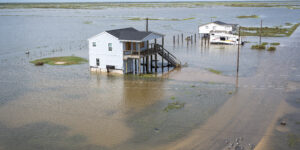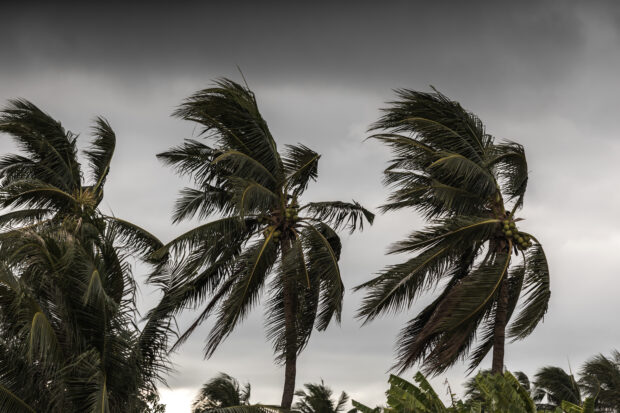Things are looking up in the buffeted Florida market, but reinsurance rates will continue to rise for the next two years, and a 2024 hurricane season could be busy. It all suggests that property insurers will continue to get creative in cutting costs and finding lower-level reinsurance coverage.
That’s the word from a report released this week by KBRA, formerly known as Kroll Bond Rating Agency, which rates and analyzes 13 Florida-domiciled property insurers.
The report warned that the moderating effect of an El Nino weather phenomenon off the west coast of South America is not expected to last into next summer. Combined with sea surface temperatures that have reached all-time highs that suggests “it is reasonable to expect a moderate likelihood for an above-average hurricane season in 2024,” reads the report, written by directors and analysts at the rating firm.
![]() The analysis said that many Florida homeowner insurers entered 2023 with weakened balance sheets, due to years of storm losses and heavy claims litigation. But thanks to a mild hurricane season this year that saw only one major storm in a lightly populated area of the state, along with groundbreaking legislative reforms, premium increases and changes in underwriting and claims handling, the Florida insurance industry ended the year in a stronger financial position.
The analysis said that many Florida homeowner insurers entered 2023 with weakened balance sheets, due to years of storm losses and heavy claims litigation. But thanks to a mild hurricane season this year that saw only one major storm in a lightly populated area of the state, along with groundbreaking legislative reforms, premium increases and changes in underwriting and claims handling, the Florida insurance industry ended the year in a stronger financial position.
One area in which some carriers made adjustments was in reinsurance. As seen at the Jan. 1 and June 1 renewals this year, reinsurers generally shifted capacity upwards, above the Florida Hurricane Catastrophe Fund attachment point, the report said.
“To fill the needs across the lower layers of the tower, certain insurers have been strategic about forming and/or utilizing captive reinsurers, which are collateralized, and allow for the most cost-effective deployment of risk transfer capital,” KBRA wrote. The report did not name those companies that formed captives.
Most carriers also tightened underwriting guidelines, including raising deductibles for policyholders. That, along with few weather events in 2023, improved the loss ratio for KBRA-rated Florida carriers, from 57.3 at the end of the third quarter in 2022 to 49.9 at the end of September this year.
In that 12-month period, direct written premiums in Florida for those KBRA-rated insurers climbed by almost 23 percent, from $289 million in 2022 to $355 million this year. Policyholder surplus also rose, to $79 million.
A KBRA spokesman said the firm rates Universal Property & Casualty Insurance; First Protective Insurance (part of Frontline Insurance); Heritage P&C; American Traditions; Olympus; Safepoint; Tower Hill Prime Insurance Co., Tower Hill Insurance Exchange; American Coastal Insurance; American Platinum P&C; Loggerhead Reciprocal Interinsurance Exchange; Orange Insurance Exchange; and Somerset Reinsurance Co.
Next year could see more entrants into the Florida market, something insurance industry advocates have encouraged. “New private capital entering the market, such as the several new reciprocal exchanges formed during 2023, will further fuel expansion through Citizens take-outs and other voluntary new business origination,” the KBRA report noted.
Elevated hurricane frequency, however, “may challenge the generally improved capital positions of Florida personal property insurers, particularly new entrants with modest surplus bases,” the report said. “Carriers will benefit significantly from the recently implemented legislative reforms and higher premiums.”
The full report can be seen here.
This article was originally published by Insurance Journal.





















 Berkshire Hathaway Announces Leadership Appointments: New CEO at GEICO
Berkshire Hathaway Announces Leadership Appointments: New CEO at GEICO  Women Are Now Leaning Out in the Workplace
Women Are Now Leaning Out in the Workplace  Acrisure to Buy MGA Vave From Canopius
Acrisure to Buy MGA Vave From Canopius  AI in Property/Casualty Insurance: Why Trusted Data Is the Missing Link
AI in Property/Casualty Insurance: Why Trusted Data Is the Missing Link 